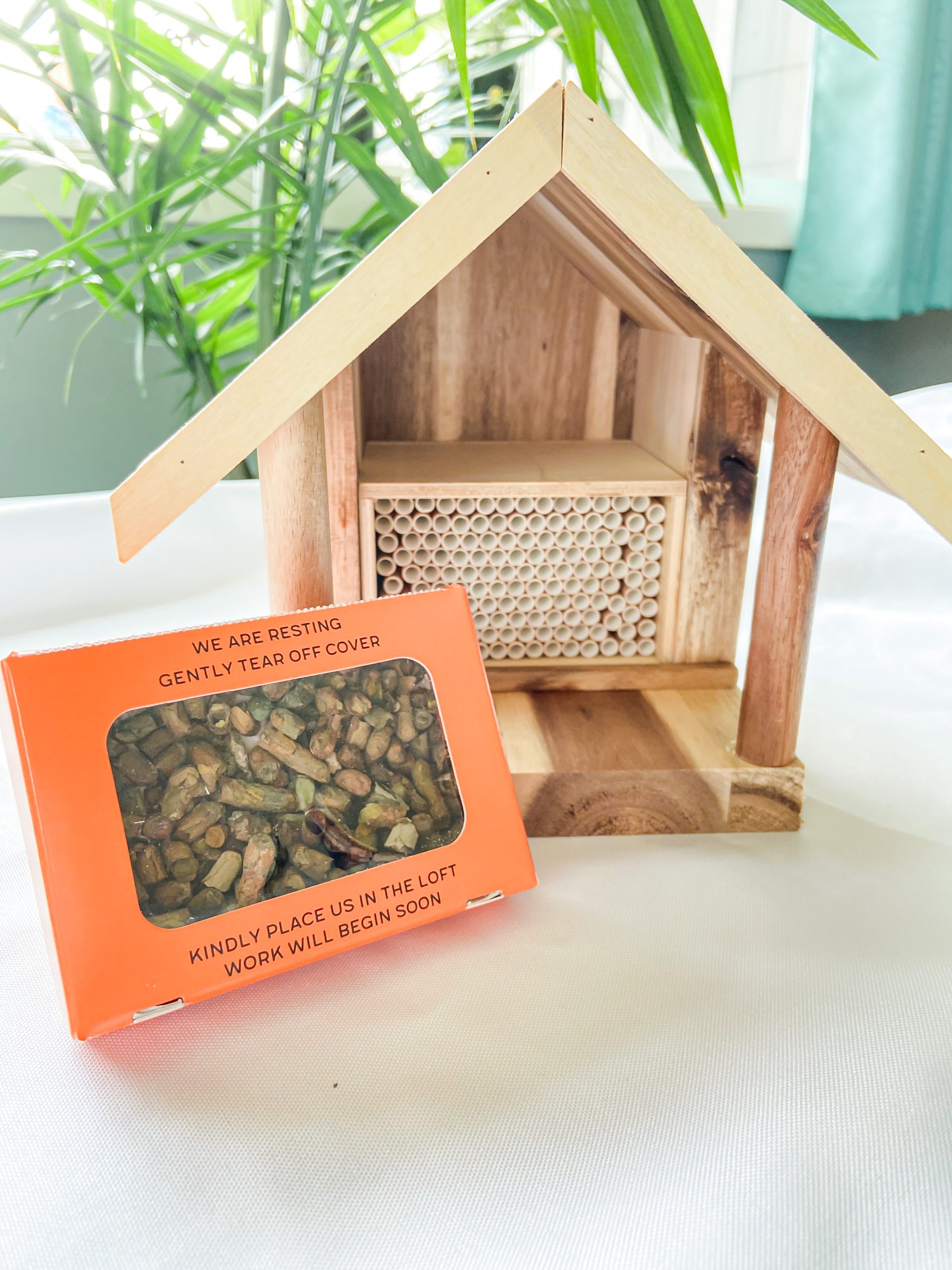Leafcutter bees are a great option for introducing pollinators into your garden! These busy bees live and work independently. Being a solitary bee, they are easy to look after and spread pollen at an accelerated rate. They are also a good choice for nature lovers who want to keep bees but want to avoid the responsibility of caring for a hive.
Unlike other bee species living and working in a hive, leafcutter bees live alone in nesting tubes (also known as bee tubes). Below, we will discuss a few things you should know about leafcutter bee nesting tubes, including what they are used for, how to care for them, and how to order a set from our team at Kind Bee Farms.
Keep reading to learn more!
What Are Leafcutter Bee Nesting Tubes?
Bee tubes are small cylindrical nests that leafcutter bees use to rest, lay eggs, and build cocoons for their eggs. They form cocoons by cutting leaves into half-moon shapes to line their nesting tube.
In the wild, leafcutter bees create their own nesting tubes by settling in hollows of wood and plant stems. To mimic their natural habitat, the bee house from our pollinator kit contains nesting tubes made from paper straws. We choose to use paper nesting tubes instead of bamboo tubes, as this ensures our bees’ wings and bodies are safe as they fly in and out!
Why Do Leafcutter Bees Need Nesting Tubes?
Leafcutter bees like their personal space and alone time! Unlike honey bees, who live and work together, leafcutter bees are solitary creatures. These super pollinators care for their own tube and never share their tube with another leafcutter bee. In fact, you will find them going in and out of a tube until they find their own home!
Nesting tubes also act as a protective barrier for female leafcutter bees to lay eggs. Our bee house includes 140 tubes for leafcutter bees to build nests, but these tubes are separated to let the bees rest without being disturbed!
How Many Bees Per Tube?
Leafcutter bee nesting tubes are small but mighty. The nesting tubes in our pollinator kit are 5mm wide, perfect for one female leafcutter bee and around 4-6 cocoons, leaving plenty of space for the mom to rest and her eggs to nest in their cocoons!
While you may think, “The more space, the better,” a nesting tube larger than 5mm requires leafcutter bees to make more trips to and from their nest to collect leaves. A smaller space to call home gives them more time to pollinate, rest, and look after their cocoons!
How Do I Look After the Bee Tubes?
Bee tubes are very low-maintenance, as leafcutter bees will look after their nests and tunnels alone—all you need to do is give them a safe spot in your garden and store them during the winter.
When installing the bee house on your property, mount it about 4ft off the ground to prevent mice, squirrels, and other critters from invading. Avoid perching it on a tree or close to an ant hill—you don’t want any bugs or pests reaching the nests!
Once the growing season is over, it is time to overwinter the cocoons. You do not need to remove the nest box from the bee house. Simply take the house off its perch and store it in a cool, dry area, such as a shed, garage, or cold room.
The temperatures in your storage area should stay above freezing to keep the eggs dormant without hurting them. Make sure the cocoons don’t get wet, as this can create bacteria and mould growth. Keep the bee house stored throughout the winter until the new growth season.
For overwintering tips, you can view this post on our Instagram page!
Pre-Order Your Leafcutter Bee Tubes Today!
If you want to see your plants and flowers thrive during the next growing season, partner with Kind Bee Farms and introduce leafcutter bees into your garden! Our pollinator kit comes with a box of Saskatchewan-raised leafcutter bees, bee tubes, and a bee house to keep your flying friends safe and sound.
Visit our Shop today to place a pre-order in the United States or Canada.

